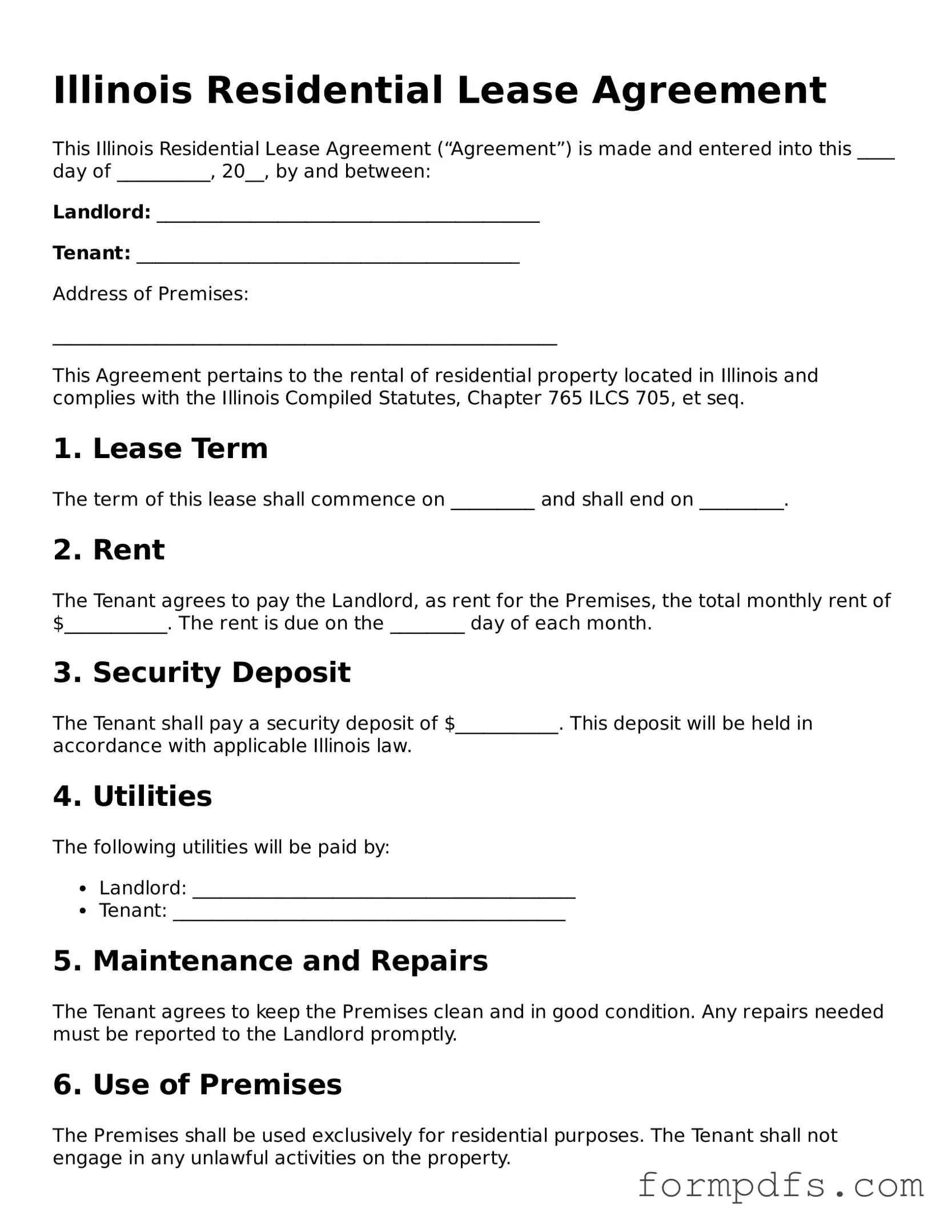What is an Illinois Residential Lease Agreement?
An Illinois Residential Lease Agreement is a legally binding contract between a landlord and a tenant. It outlines the terms and conditions under which the tenant will occupy a rental property. This agreement typically includes details about rent, security deposits, maintenance responsibilities, and the duration of the lease. It serves to protect the rights of both parties and provides a clear framework for the rental relationship.
What should be included in the lease agreement?
A comprehensive Illinois Residential Lease Agreement should include the following elements: the names of the landlord and tenant, the rental property's address, the lease term (start and end dates), rent amount and payment methods, security deposit details, maintenance responsibilities, rules regarding pets, and procedures for terminating the lease. Including these details helps to prevent misunderstandings and disputes in the future.
How long is a typical lease term?
In Illinois, lease terms can vary widely. Most residential leases are for a duration of 12 months, but shorter or longer terms are also common. Some landlords may offer month-to-month agreements, which provide flexibility for both parties. It's important for tenants to understand the lease term, as it dictates their commitment to the rental property.
What are the tenant's rights under the lease?
Tenants in Illinois have several rights protected by law. These include the right to a habitable living environment, the right to privacy, and the right to receive proper notice before eviction. Tenants also have the right to request repairs and maintenance. Understanding these rights is crucial for tenants to ensure they are treated fairly and to hold landlords accountable.
Can a lease be terminated early?
Yes, a lease can be terminated early, but specific conditions must be met. Tenants may have the right to break the lease under certain circumstances, such as domestic violence or uninhabitable living conditions. However, doing so typically requires providing written notice to the landlord and may involve penalties, such as losing the security deposit. It's essential to review the lease terms and consult local laws before taking action.
What happens if the landlord does not fulfill their obligations?
If a landlord fails to meet their obligations, such as making necessary repairs, tenants have several options. They can first communicate their concerns in writing, giving the landlord a chance to address the issue. If the problem persists, tenants may have the right to withhold rent or make the repairs themselves and deduct the costs from the rent, depending on state laws. Seeking legal advice can provide clarity on the best course of action.
Is it necessary to have a written lease agreement?
While verbal agreements can be legally binding, having a written lease agreement is highly recommended. A written document provides clear evidence of the terms agreed upon, reducing the risk of misunderstandings. In Illinois, certain lease agreements must be in writing to be enforceable, especially if they exceed one year. Therefore, it is wise for both landlords and tenants to formalize their agreement in writing.
